
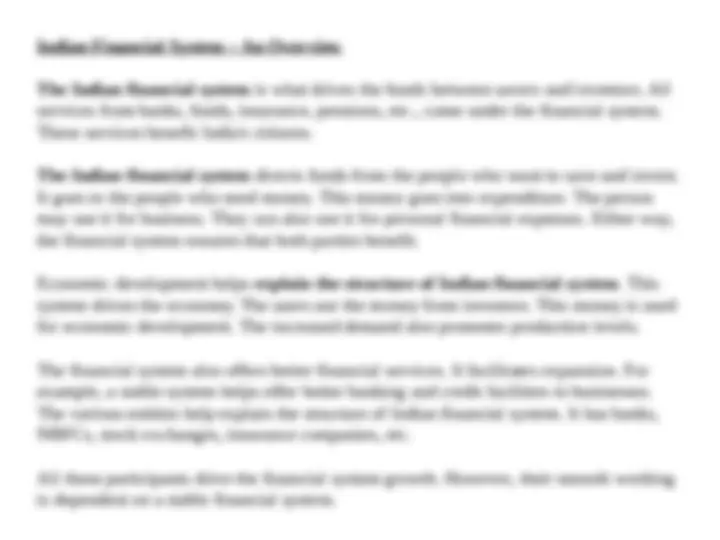
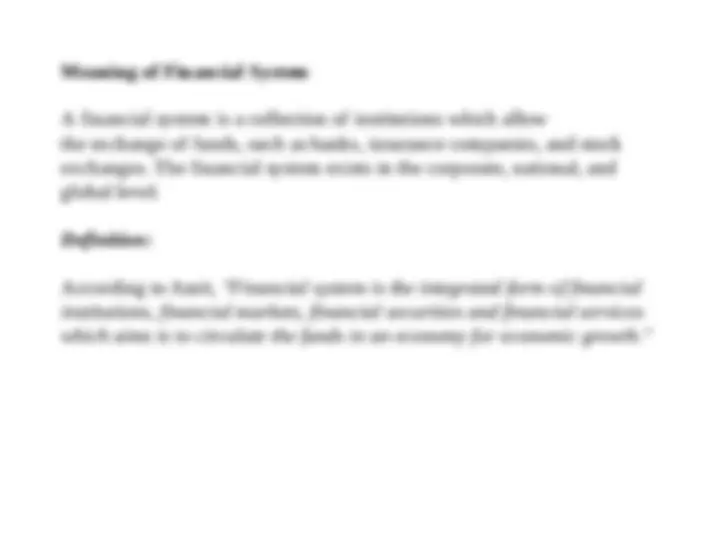
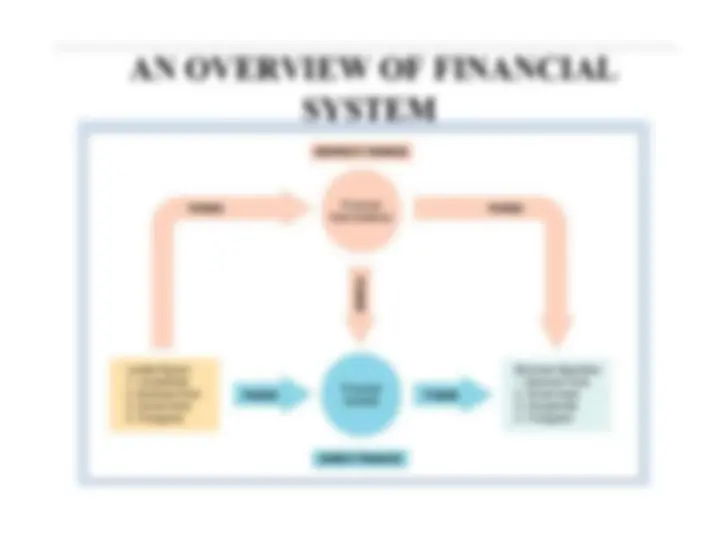
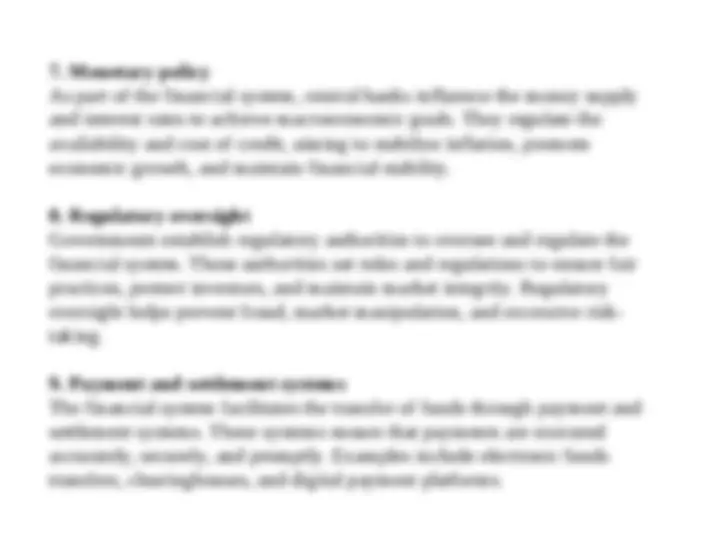
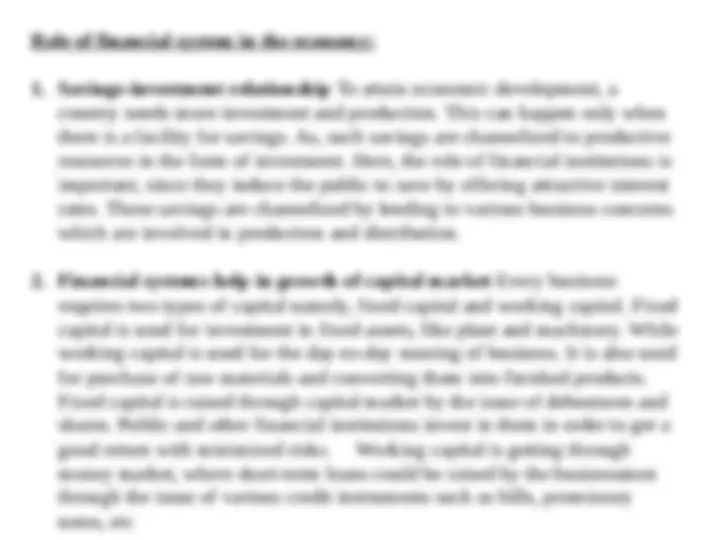
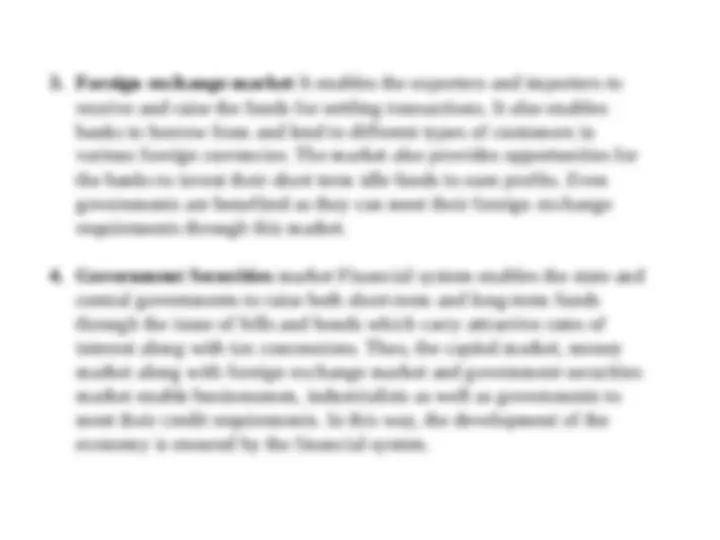
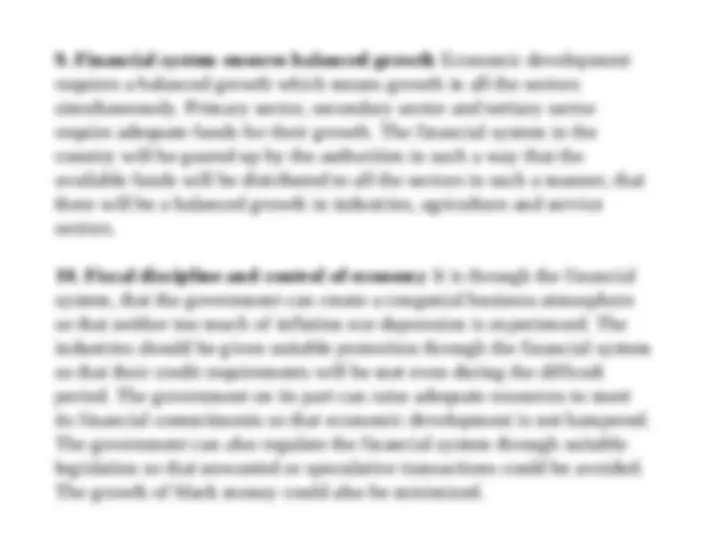
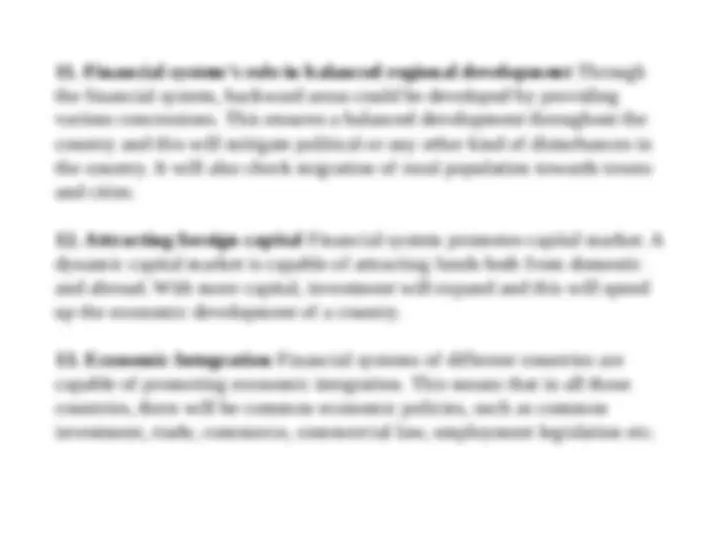
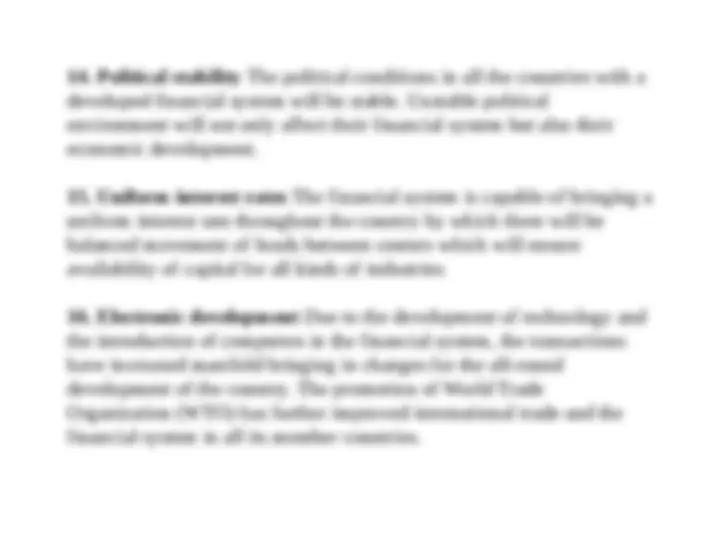
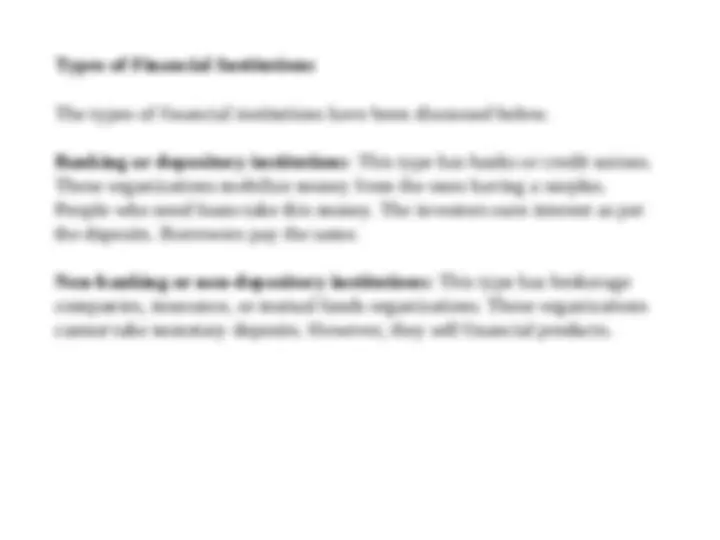

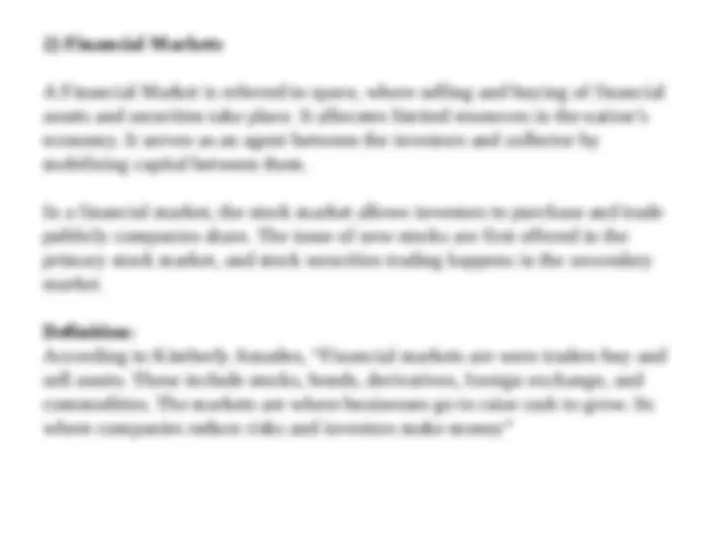

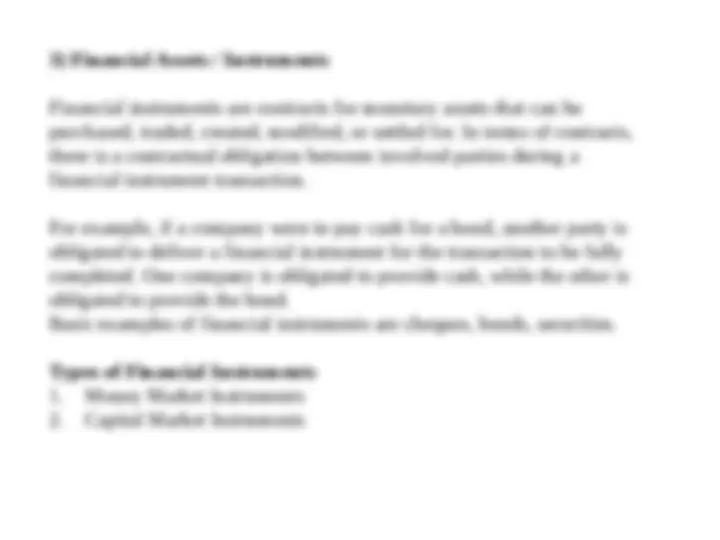
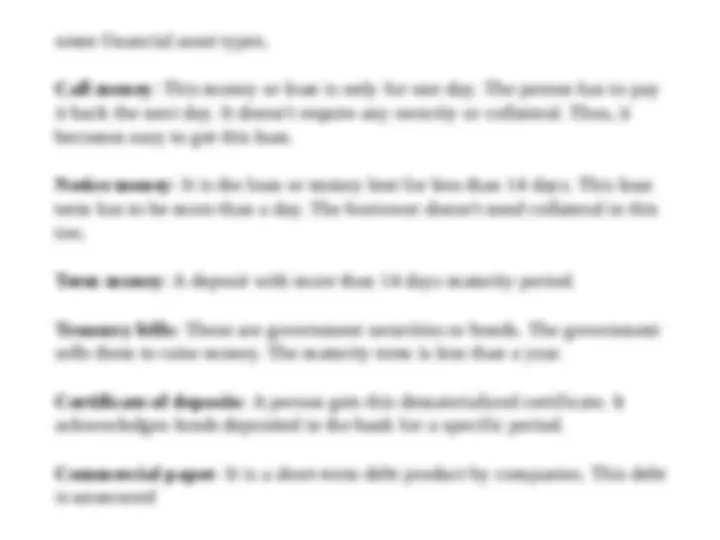
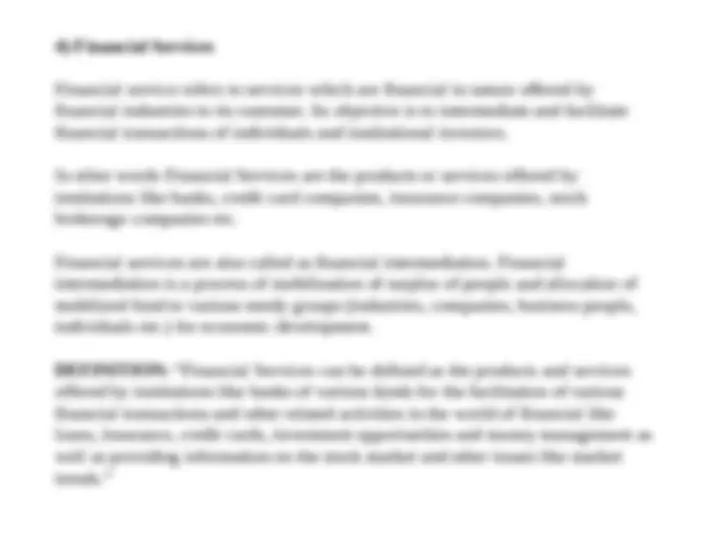


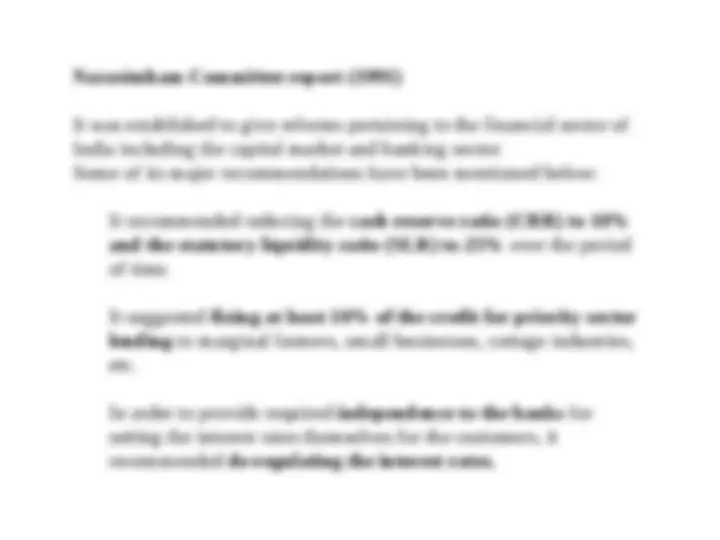
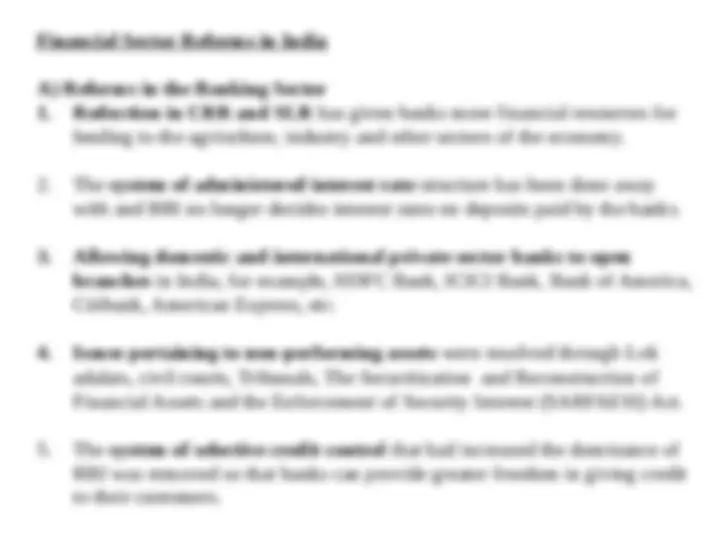
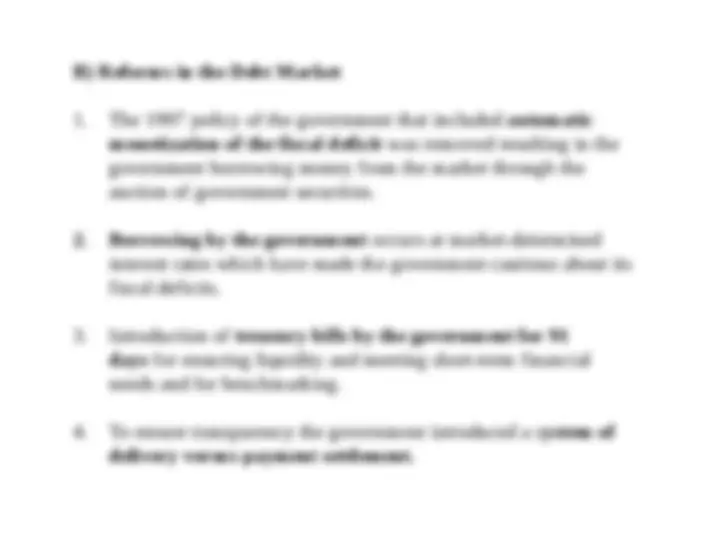
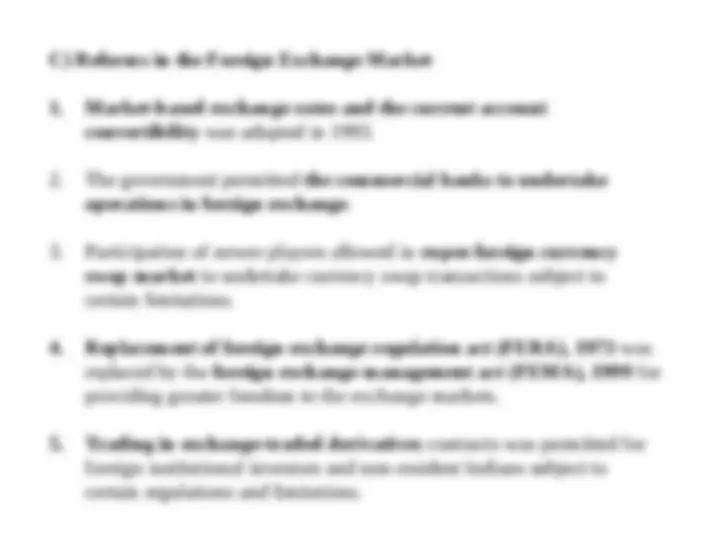

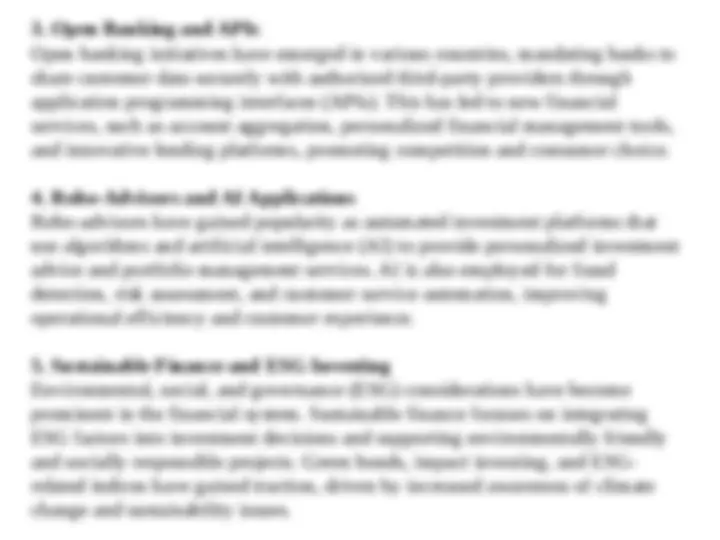



Study with the several resources on Docsity

Earn points by helping other students or get them with a premium plan


Prepare for your exams
Study with the several resources on Docsity

Earn points to download
Earn points by helping other students or get them with a premium plan
Community
Ask the community for help and clear up your study doubts
Discover the best universities in your country according to Docsity users
Free resources
Download our free guides on studying techniques, anxiety management strategies, and thesis advice from Docsity tutors
Thankyou for sharing the financial statements analysis
Typology: Study notes
1 / 33

This page cannot be seen from the preview
Don't miss anything!


























Introduction In its simple meaning the term ‘finance’ refers to monetary resources & the term ‘financing’ refers to the activity of providing required monetary resources to the needy persons and institutions. The term ‘financial system’ refers to a system that is concerned with the mobilization of the savings of the public and providing of necessary funds to the needy persons and institutions for enabling the production of goods and/or for provision of services. Thus, a financial system can be understood as a system that allows the exchange of funds between lenders, investors, and borrowers. In other words, the system that facilitates the movement of finance from the persons who have surplus funds to the persons who need it is called as financial system. It consists of complex, closely related services, markets, and institutions used to provide an efficient and regular linkage between investors and depositors. Financial systems operate at national, global, and firm-specific levels. It includes the public, private and government spaces and financial instruments which can relate to countless assets and liabilities.
Meaning of Financial System A financial system is a collection of institutions which allow the exchange of funds, such as banks, insurance companies, and stock exchanges. The financial system exists in the corporate, national, and global level. Definition: According to Amit, "Financial system is the integrated form of financial institutions, financial markets, financial securities and financial services which aims is to circulate the funds in an economy for economic growth."
4. Financial markets It provides a platform for the buying and selling of financial assets. Investors can purchase stocks, bonds, currencies, commodities, or derivatives through exchanges or over-the-counter (OTC) markets. The prices of these assets are determined by supply and demand dynamics. 5. Capital allocation The financial system plays a vital role in allocating capital efficiently. The savers’ funds are channeled to borrowers or investors with productive capital uses. This capital allocation process helps finance economic activities like business expansion, infrastructure development, or innovation. 6. Risk management Financial institutions play a crucial role in managing risks associated with lending and investing. They assess the creditworthiness of borrowers, evaluate investment opportunities, and employ risk management techniques to mitigate potential losses. This includes diversifying portfolios, conducting due diligence, and implementing risk monitoring systems.
7. Monetary policy As part of the financial system, central banks influence the money supply and interest rates to achieve macroeconomic goals. They regulate the availability and cost of credit, aiming to stabilize inflation, promote economic growth, and maintain financial stability. 8. Regulatory oversight Governments establish regulatory authorities to oversee and regulate the financial system. These authorities set rules and regulations to ensure fair practices, protect investors, and maintain market integrity. Regulatory oversight helps prevent fraud, market manipulation, and excessive risk- taking. 9. Payment and settlement systems The financial system facilitates the transfer of funds through payment and settlement systems. These systems ensure that payments are executed accurately, securely, and promptly. Examples include electronic funds transfers, clearinghouses, and digital payment platforms.
3. Foreign exchange market It enables the exporters and importers to receive and raise the funds for settling transactions. It also enables banks to borrow from and lend to different types of customers in various foreign currencies. The market also provides opportunities for the banks to invest their short term idle funds to earn profits. Even governments are benefited as they can meet their foreign exchange requirements through this market. 4. Government Securities market Financial system enables the state and central governments to raise both short-term and long-term funds through the issue of bills and bonds which carry attractive rates of interest along with tax concessions. Thus, the capital market, money market along with foreign exchange market and government securities market enable businessmen, industrialists as well as governments to meet their credit requirements. In this way, the development of the economy is ensured by the financial system.
5. Infrastructure and growth Economic development of any country depends on the infrastructure facility available in the country. In the absence of key industries like coal, power and oil, development of other industries will be hampered. It is here that the financial services play a crucial role by providing funds for the growth of infrastructure industries. Private sector will find it difficult to raise the huge capital needed for setting up infrastructure industries. For a long time, infrastructure industries were started only by the government in India. But now, with the policy of economic liberalization, more private sector industries have come forward to start infrastructure industry. The Development Banks and the Merchant banks help in raising capital for these industries. 6. Development of trade: The financial system helps in the promotion of both domestic and foreign trade. The financial institutions finance traders and the financial market helps in discounting financial instruments such as bills. Foreign trade is promoted due to per-shipment and post-shipment finance by commercial banks. They also issue Letter of Credit in favor of the importer. Thus, the precious foreign exchange is earned by the country because of the presence of financial system
9. Financial system ensures balanced growth Economic development requires a balanced growth which means growth in all the sectors simultaneously. Primary sector, secondary sector and tertiary sector require adequate funds for their growth. The financial system in the country will be geared up by the authorities in such a way that the available funds will be distributed to all the sectors in such a manner, that there will be a balanced growth in industries, agriculture and service sectors. 10. Fiscal discipline and control of economy It is through the financial system, that the government can create a congenial business atmosphere so that neither too much of inflation nor depression is experienced. The industries should be given suitable protection through the financial system so that their credit requirements will be met even during the difficult period. The government on its part can raise adequate resources to meet its financial commitments so that economic development is not hampered. The government can also regulate the financial system through suitable legislation so that unwanted or speculative transactions could be avoided. The growth of black money could also be minimized.
11. Financial system’s role in balanced regional development Through the financial system, backward areas could be developed by providing various concessions. This ensures a balanced development throughout the country and this will mitigate political or any other kind of disturbances in the country. It will also check migration of rural population towards towns and cities. 12. Attracting foreign capital Financial system promotes capital market. A dynamic capital market is capable of attracting funds both from domestic and abroad. With more capital, investment will expand and this will speed up the economic development of a country. 13. Economic Integration Financial systems of different countries are capable of promoting economic integration. This means that in all those countries, there will be common economic policies, such as common investment, trade, commerce, commercial law, employment legislation etc.
1) Financial Institutions Financial institutions are the intermediaries who facilitate smooth functioning of the financial system by making investors and borrowers meet. They mobilize savings of the surplus units and allocate them in productive activities promising a better rate of return. Financial institutions also provide services to entities (individual, business, government) seeking advice on various issue ranging from restructuring to diversification plans. They provide whole range of services to the entities who want to raise funds from the markets or elsewhere. Financial institutions are also termed as financial intermediaries because they act as middle between savers by accumulating Funds them and borrowers by lending these fund.
Classification of Financial Institutions The classification of financial institutions has been stated below. Regulatory : These institutions regulate the market, like RBI and SEBI. Intermediaries : Commercial banks with loans and financial assistance like SBI and PNB Non-intermediaries :Institutions with financial aid for corporate customers like NABARD. (National Bank for Agriculture and rural development)
2) Financial Markets A Financial Market is referred to space, where selling and buying of financial assets and securities take place. It allocates limited resources in the nation’s economy. It serves as an agent between the investors and collector by mobilising capital between them. In a financial market, the stock market allows investors to purchase and trade publicly companies share. The issue of new stocks are first offered in the primary stock market, and stock securities trading happens in the secondary market. Definition: According to Kimberly Amadeo, “Financial markets are were traders buy and sell assets. These include stocks, bonds, derivatives, foreign exchange, and commodities. The markets are where businesses go to raise cash to grow. Its where companies reduce risks and investors make money”